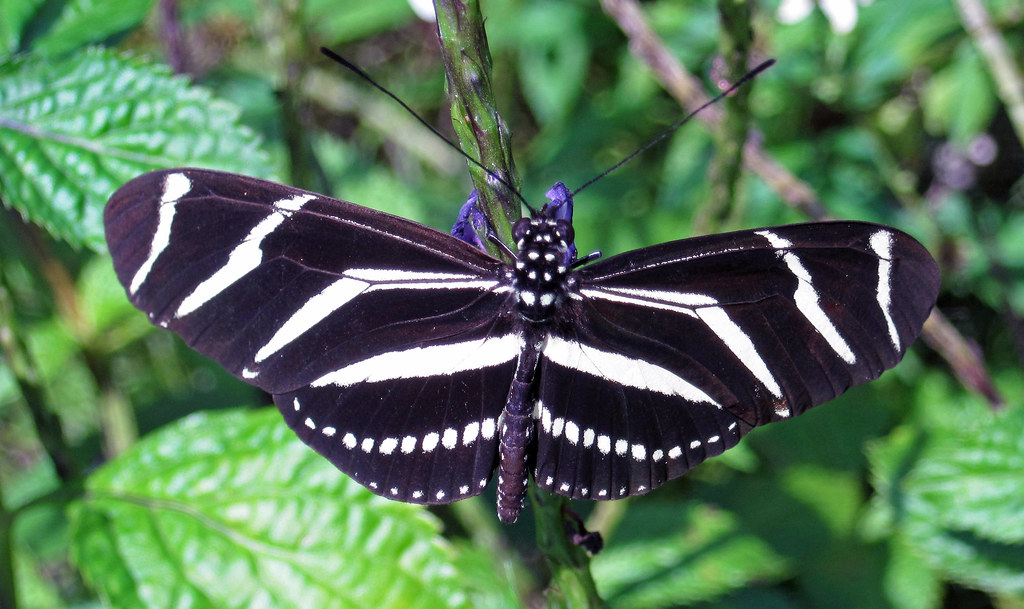The Zebra Longwing Butterfly, scientifically known as Heliconius charithonia, is a species of butterfly native to the southern United States, including the state of Florida. It is one of the most recognizable and charismatic butterflies found in the region.

Here are some key facts about the Zebra Longwing Butterfly in Florida:
Appearance: The Zebra Longwing Butterfly has a unique and striking appearance. Its wings are predominantly black with bold yellow stripes, resembling a zebra pattern. The wingspan of an adult butterfly can range from 2.75 to 3.25 inches (7 to 8.3 cm). The wings have a delicate and fluttery appearance, and the overall body of the butterfly is slender.
Habitat: Zebra Longwings are commonly found in subtropical and tropical habitats, including various regions in Florida. They are particularly abundant in moist, shaded areas such as hardwood hammocks, forests, and gardens. These butterflies tend to favor locations with abundant nectar sources and host plants.
Host Plants: Unlike many other butterfly species, Zebra Longwings do not rely on a single host plant for egg-laying. Their caterpillars feed on various species of passionflower vines (Passifloraceae family), which serve as the primary food source for their larvae. Common host plants include Passiflora incarnata (Purple Passionflower) and Passiflora suberosa (Corkystem Passionflower).
Behavior: Zebra Longwings have interesting behaviors that set them apart from other butterflies. They are known for their “puddling” behavior, where groups of butterflies gather in large numbers on wet soil, mud puddles, or damp surfaces to feed on minerals and salts. This behavior is especially prevalent in males, who require these nutrients for reproduction.
Migratory and Colonial: Zebra Longwings are known for their migratory and colonial habits. During periods of favorable weather, these butterflies can form large aggregations consisting of hundreds or even thousands of individuals. They migrate to find new sources of food and suitable breeding grounds. These colonies often return to the same roosting sites day after day.
Long Lifespan: Compared to many other butterfly species, Zebra Longwings have a relatively long lifespan. They can live for several months, allowing them to engage in multiple reproductive cycles. This longevity is attributed to their ability to feed on pollen, which provides additional nutrients and extends their lifespan beyond the typical butterfly lifespan of a few weeks.
Conservation Status: The Zebra Longwing Butterfly is not currently considered threatened or endangered. However, habitat loss and fragmentation, as well as the decline of host plants due to urbanization and agricultural practices, can negatively impact their populations. Protecting and preserving their natural habitats, including the availability of passionflower vines, is crucial for their long-term survival. So grow some purple passionflowers in your Florida patio garden!
Overall, the Zebra Longwing Butterfly is a captivating and iconic species in Florida, known for its distinctive appearance, interesting behaviors, and ability to thrive in a variety of habitats.
